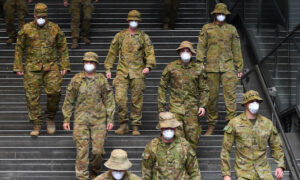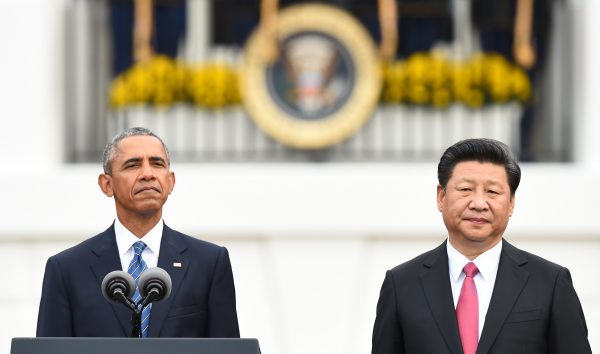No Time for Thumb-Twiddling in the Face of Beijing’s Military Build Up
Commentary The Defence White Paper published by the Australian government in 2016 was the most far-reaching and comprehensive of its type. Projecting forward for 20 years, the paper, and its accompanying Defence Industry White Paper, proposed a major program of defence acquisitions to ensure the nation’s security. It also pegged the Defence expenditure base to at least two percent of GDP. As defence minister, I worked with officials in 2014-15 to write the paper, taking numerous submissions to the National Security Committee of Cabinet during the course of the year. Coming just six years after the previous white paper, the document and associated decisions authorised the complete renewal of Australia’s naval fleet and the acquisition of a range of new military equipment, including critical cyber capabilities. The government also authorised the replacement of the ageing Collins class submarines following dithering for years by the previous Labor administration. It accompanied other significant decisions by the Abbott government, including the establishment of a joined-up One Defence force for the nation. It is a mark of the rapidly changing regional environment that the current government commissioned the Defence Strategic Review less than seven years later. Few in 2016 could envision the threats to world peace and regional security that have arisen in recent years. Aggressive Indo-Pacific Expansion Chinese leader Xi Jinping was still in his first five-year term as general secretary of the Chinese Communist Party (CCP). Much of the western world still believed he was committed to Deng Xiaoping’s opening up. Xi’s aspirations to conquer Taiwan, control the region, and impose Chinese hegemony on the world were muted. He was entering into free trade agreements and promoting the Belt and Road Initiative as a contribution to global development and world peace. His belief in the supremacy of Marxism with Chinese characteristics and his conviction that it was in competition with and would prevail over western liberal democracy was little understood. But there were warning signs. When Xi stood next to President Barack Obama for a press conference in the Rose Garden of the White House on Sept. 25, 2015, he said two things of concern. President Barack Obama and Chinese leader Xi Jinping at the White House on Sept. 25, 2015. (Jim Watson/AFP/Getty Images) First, Xi insisted that the islands in the South China Sea belonged to China, an assertion that the Permanent Court of Arbitration at The Hague dismissed in July 2016, finding that there was no evidence that China had exercised exclusive control over the waterway. More telling, however, was Xi’s assertion that “China does not intend to pursue militarization” of the artificial islands it had constructed in the South China Sea. This was clearly false: it was already doing so! Moreover, the Chinese regime continued both the construction of artificial islands and the installation of military facilities in the following months and years. The CCP’s rapid escalation of its ambitions, the cyberattacks, the grey-zone warfare and the aggressive actions towards its neighbours have wrought a new, more dangerous strategic environment than most could envisage just a few years ago. Hence the recently completed Defence Strategic Review. In presenting the report to the prime minister, the former head of the Australian Defence Force, Sir Angus Houston, said Australia now “faces the worst strategic circumstances of his lifetime”—that is, since World War II! The Indo-Pacific is facing a military build-up similar to Europe in the 1930s. Nations such as Australia must respond accordingly if we are to protect our lifestyles and freedoms. No Room for Complacency Although the report is yet to be publicly released, various news stories suggest it recommends a range of new Defence acquisitions, including missiles, drones, and naval vessels. Both the nature of warfare and the threat to Australia has rapidly changed in the last few years. It is critical that government intention is rapidly translated into orders and deployment. We don’t have a decade to sit around mulling over options or contemplating bespoke equipment for Australia. Nor can we luxuriate in the fantasy of creating a whole new domestic defence industry that would delay construction and purchase for years, if not decades. Nor can we divorce other critical infrastructure, such as secure energy and supply chains, from our immediate defence requirements. Without these things, our security is at grave risk. Australia should also outline a path to defence expenditure of three percent of GDP. Xi’s relentless campaign is continuing apace. He has repeatedly confirmed his intentions. We ignore his warnings at our peril. Views expressed in this article are the opinions of the author and do not necessarily reflect the views of The Epoch Times.

Commentary
The Defence White Paper published by the Australian government in 2016 was the most far-reaching and comprehensive of its type. Projecting forward for 20 years, the paper, and its accompanying Defence Industry White Paper, proposed a major program of defence acquisitions to ensure the nation’s security. It also pegged the Defence expenditure base to at least two percent of GDP.
As defence minister, I worked with officials in 2014-15 to write the paper, taking numerous submissions to the National Security Committee of Cabinet during the course of the year.
Coming just six years after the previous white paper, the document and associated decisions authorised the complete renewal of Australia’s naval fleet and the acquisition of a range of new military equipment, including critical cyber capabilities.
The government also authorised the replacement of the ageing Collins class submarines following dithering for years by the previous Labor administration.
It accompanied other significant decisions by the Abbott government, including the establishment of a joined-up One Defence force for the nation.
It is a mark of the rapidly changing regional environment that the current government commissioned the Defence Strategic Review less than seven years later.
Few in 2016 could envision the threats to world peace and regional security that have arisen in recent years.
Aggressive Indo-Pacific Expansion
Chinese leader Xi Jinping was still in his first five-year term as general secretary of the Chinese Communist Party (CCP). Much of the western world still believed he was committed to Deng Xiaoping’s opening up.
Xi’s aspirations to conquer Taiwan, control the region, and impose Chinese hegemony on the world were muted.
He was entering into free trade agreements and promoting the Belt and Road Initiative as a contribution to global development and world peace.
His belief in the supremacy of Marxism with Chinese characteristics and his conviction that it was in competition with and would prevail over western liberal democracy was little understood.
But there were warning signs. When Xi stood next to President Barack Obama for a press conference in the Rose Garden of the White House on Sept. 25, 2015, he said two things of concern.

First, Xi insisted that the islands in the South China Sea belonged to China, an assertion that the Permanent Court of Arbitration at The Hague dismissed in July 2016, finding that there was no evidence that China had exercised exclusive control over the waterway.
More telling, however, was Xi’s assertion that “China does not intend to pursue militarization” of the artificial islands it had constructed in the South China Sea.
This was clearly false: it was already doing so! Moreover, the Chinese regime continued both the construction of artificial islands and the installation of military facilities in the following months and years.
The CCP’s rapid escalation of its ambitions, the cyberattacks, the grey-zone warfare and the aggressive actions towards its neighbours have wrought a new, more dangerous strategic environment than most could envisage just a few years ago.
Hence the recently completed Defence Strategic Review. In presenting the report to the prime minister, the former head of the Australian Defence Force, Sir Angus Houston, said Australia now “faces the worst strategic circumstances of his lifetime”—that is, since World War II!
The Indo-Pacific is facing a military build-up similar to Europe in the 1930s. Nations such as Australia must respond accordingly if we are to protect our lifestyles and freedoms.
No Room for Complacency
Although the report is yet to be publicly released, various news stories suggest it recommends a range of new Defence acquisitions, including missiles, drones, and naval vessels.
Both the nature of warfare and the threat to Australia has rapidly changed in the last few years.
It is critical that government intention is rapidly translated into orders and deployment.
We don’t have a decade to sit around mulling over options or contemplating bespoke equipment for Australia.
Nor can we luxuriate in the fantasy of creating a whole new domestic defence industry that would delay construction and purchase for years, if not decades.
Nor can we divorce other critical infrastructure, such as secure energy and supply chains, from our immediate defence requirements.
Without these things, our security is at grave risk.
Australia should also outline a path to defence expenditure of three percent of GDP.
Xi’s relentless campaign is continuing apace. He has repeatedly confirmed his intentions. We ignore his warnings at our peril.
Views expressed in this article are the opinions of the author and do not necessarily reflect the views of The Epoch Times.












